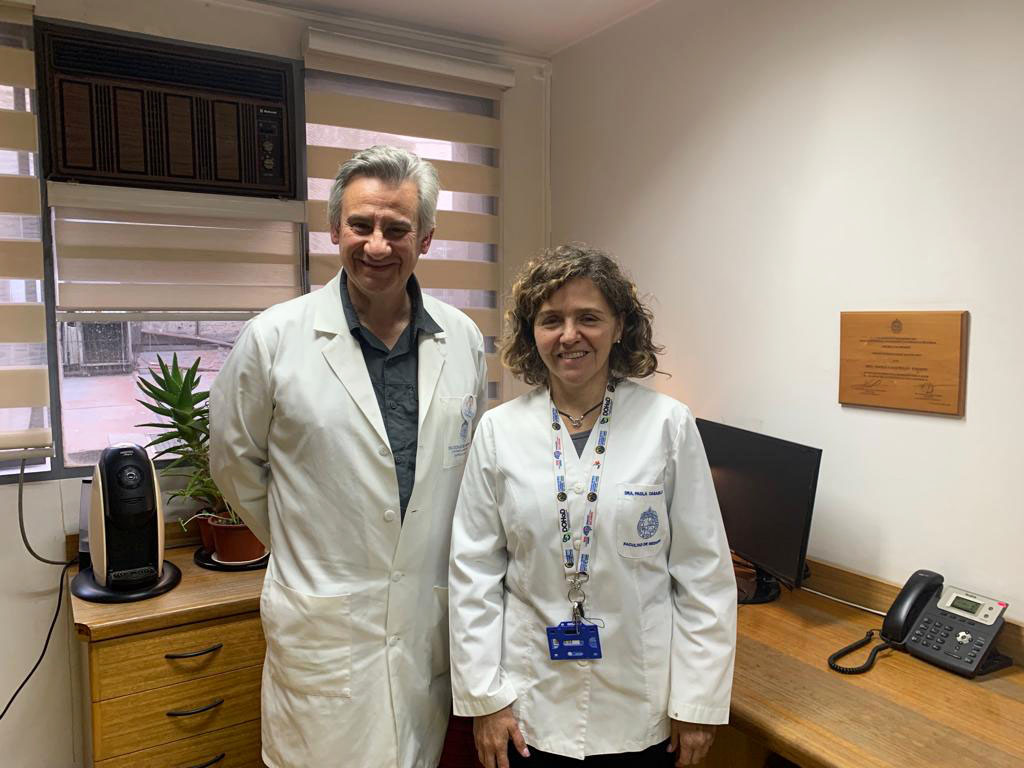Interview with editors of Revista UC, ARS MÉDICA: “Platforms like SciELO are virtuous circles”
We spoke with Dr. Max Andresen and Dr. Paola Casanello, editor-in-chief and co-editor of the magazine Ars MÉDICA UC about their editorial work, projections and the work behind indexing to SciELO.


Magazine ARS MEDICAL ands a publication quarterly published by the Faculty of Medicine of the Pontifical Catholic University of Chile what are you looking for promote knowledge of different areas of medicine, highlighting their implications in today's society. In January 2023 it was approved in the SciELO-Chile collection, which means a great achievement for the entire team, which emphasizes the relevance of being able to be viewed at a national and international level.
What were the elements that improved your publication, and that you consider key to being indexed in SciELO?
Dr. Andresen: One of the elements was getting the journal open. When magazines are very niche, it is difficult to insert yourself into these types of platforms. One of the first tasks was to be able to recruit more associate editors and more reviewers who are not from UC. That's key. And to accomplish this they evaluated us first: they asked for resumes and research backgrounds from the associate editors and us. This is how they evaluated the quality of the professionals. In addition to that, they evaluate us quarterly to ensure that we meet delivery dates, quality, the number of items required, etc. These are not pure cases, reviews or opinions. All of the above must be fulfilled, and we had to improve much of this, include it and open ourselves to what they asked of us.
And what strategies did they use? How were these goals proposed?
Dr. Andresen: Basically because of the networks they have. The dr. Casanello knows many people in the publishing industry, and is a highly prestigious researcher. Just put your name and people will be interested. That speaks of a serious issue, too.
Dr. Casanello: At first the magazine was in the extension direction. Journalists from that department helped us find funds for the layout process. We got some sponsorships such as the health network and, in 2015, we decided to have social networks: Facebook and Twitter This is how we conquer our Facebook followers. We made a small investment to reach such an audience, of such an age, at such a time. Thus, we exploded to 10,000 followers quickly.
Then you invite someone to be a reviewer for the magazine, they get to know it, they realize that we have an official platform, that we have our logos and that we have our editorial process. That's what we did from the beginning: have a well-done editorial process, so that people realized that this is serious. With the recognition of Dr. Andersen we began to invite more people, and now we collaborate with the U. de Los Andes, del Desarrollo, Andrés Bello, the U of Chile, among others. There are also international universities. The most difficult thing was convincing an agent to dedicate his time to the magazine that was not indexed.
There was an internal incentive as well, the deans in the academic evaluation processes included that “if you publish in Ars Médica, you have validation as if it were SciELO magazine.” Thus, many UC academics wanted to apply and work with us. Having international conferences was something that also helped us a lot, whether at the ministry level, such as having participated in LACRE, an international resident training conference.
What opportunities arise for the journal from being indexed in SciELO?
Dr. Andresen: These platforms are in some ways virtuous circles: the more exposure there is - for the authors and the journal -, it is expected that there will be higher quality articles that over time have an impact factor for people. Thanks to SciELO, the magazine is viewed more, and, therefore, people are more interested in publishing. When the journals already have more history there is a little more permissiveness, but we are just entering so we have to be more concerned that it is a journal open to the entire scientific community, and not just the Catholic University. For us it is essential to first pass the consolidation stage of the magazine before wanting to be on a platform larger than the current one.


What is the approach that this magazine takes to research, whether national, South American or however you have positioned yourself?
Dr. Andersen: Our magazine has a specific focus on medical topics. And being relatively new, it has the advantage of having a spectrum in biological areas that are higher. It allows many researchers from different branches - medical, biochemistry, etc. - to send their work. It is a fairly anti-transversal magazine, and a very good alternative for dissemination in different areas, for example, in the area of pharmacology, where we know people, or in the same area in which I participate. In general we have very positive responses and a willingness to send works to our magazine.
Dr. Casanello: This is the best medical school in South America after UNAM in Mexico, and it is the best in the country. Knowing this, we want our magazine to print that seal, how to teach medicine. That is why medical education is a topic that we are very interested in promoting.
How has the collaborative work with UC Libraries been? What has been the contribution that you envision?
Dr. Casanello: It has been very important, especially at the beginning. I understood very little about how to be an editor or about indexing. The UC Library team helped us a lot in that regard. We were invited to training at LILACS, we received access to the plagiarism software that the library has for other journals, etc. We have much more to do together. Today we pay for external services that we could perfectly do from within to reduce costs, or use the facilities that already exist for other journals at the UC. As we consolidate as a magazine we hope to be able to free ourselves from some of the things we have from the outside and thus begin to use institutional resources.
About the UC Magazine Portal
Following the philosophy of open access, the UC Journal Portal aims to generate greater visibility of our research journals, enhance the citation of their articles by the national and international scientific community and provide a space for training and collaboration. for the different actors in the publishing world (editors, authors and researchers, among others). FAQ and contact HERE.